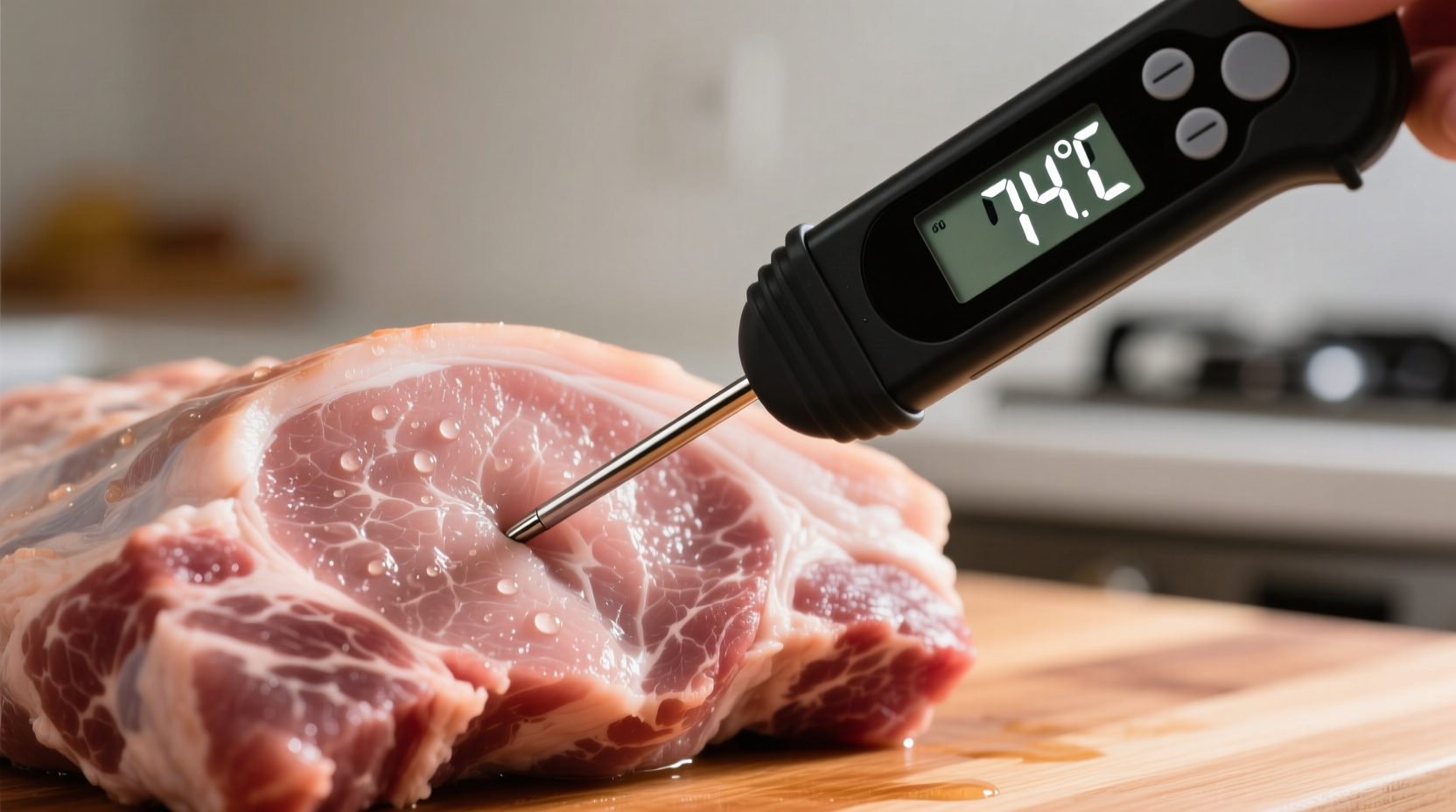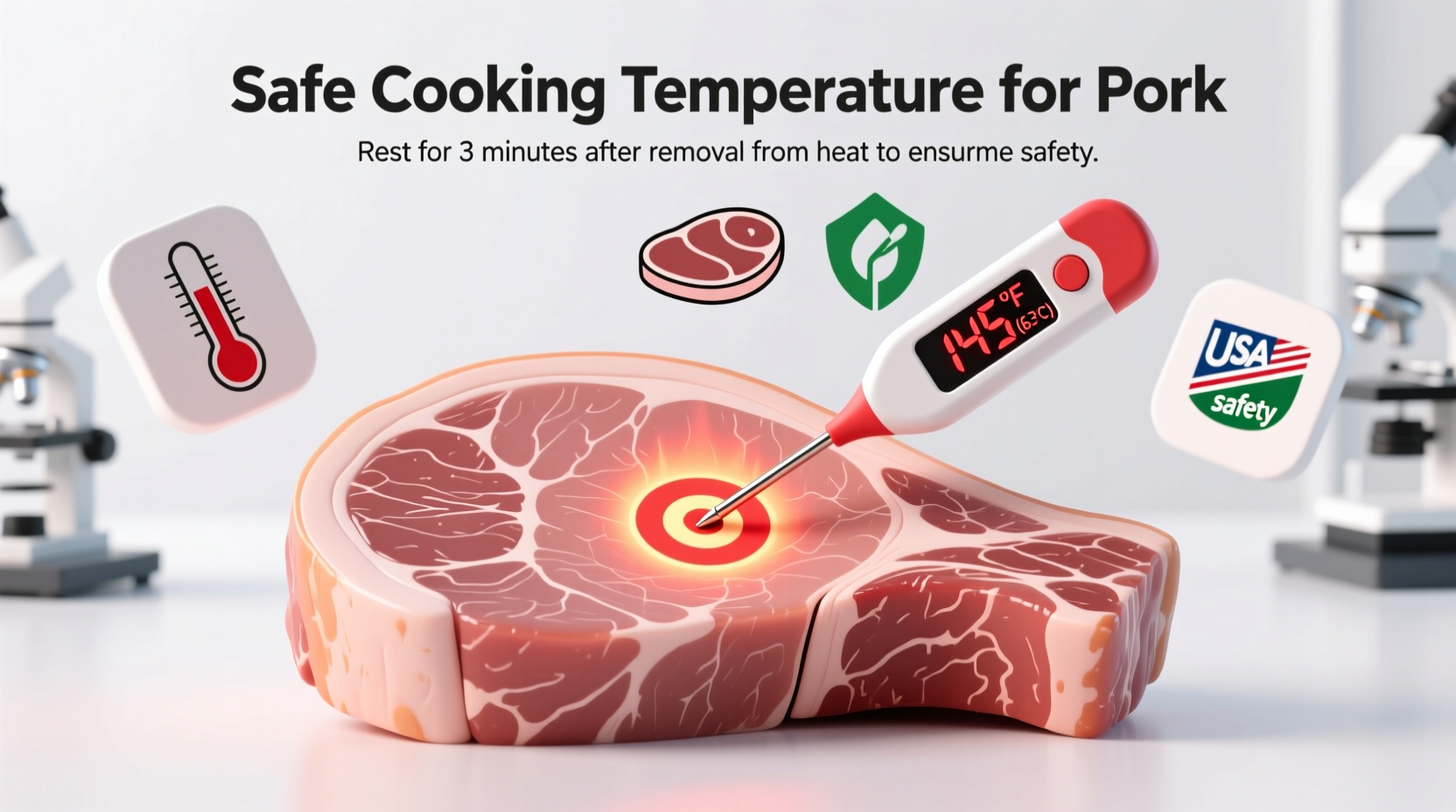The Evolution of Pork Cooking Temperatures: Science Over Myths
For decades, home cooks were told to cook pork until it reached 160°F—a guideline that often resulted in dry, tough meat. But advances in food safety research and farming practices have transformed this recommendation. Today's commercial pork production has virtually eliminated trichinella parasites, the primary concern behind higher cooking temperatures.
Let's explore why the science has changed and how to apply these updated guidelines in your kitchen with confidence.
Why 145°F Is the New Standard for Perfect Pork
The shift from 160°F to 145°F wasn't arbitrary—it represents a significant advancement in food science understanding. Modern pork is dramatically safer than decades ago due to:
- Improved animal feed regulations that prevent parasite transmission
- Strict USDA inspection protocols at processing facilities
- Better understanding of pathogen destruction temperatures
At 145°F, harmful bacteria like Salmonella and E. coli are effectively destroyed, while the meat retains its natural juices. The required 3-minute rest period allows residual heat to continue the pathogen-killing process while enabling muscle fibers to relax and reabsorb juices.

Complete Pork Temperature Guide by Cut
| Pork Cut | Recommended Temperature | Rest Time | Visual Doneness Indicator |
|---|---|---|---|
| Tenderloin, Loin, Chops | 145°F (63°C) | 3 minutes | Slight pink center, clear juices |
| Shoulder (Pulled Pork) | 195-205°F (90-96°C) | 1-2 hours | Falls apart easily |
| Leg (Fresh Ham) | 145°F (63°C) | 3 minutes | Slight pink center |
| Ground Pork | 160°F (71°C) | None required | No pink remaining |
| Pork Ribs | 190-203°F (88-95°C) | 30+ minutes | Meat pulls back from bones |
How to Accurately Measure Pork Temperature
Getting an accurate temperature reading is crucial for both safety and quality. Follow these professional techniques:
- Use a reliable instant-read thermometer - Digital thermometers provide the most accurate readings in 3-5 seconds
- Insert in the thickest part - Avoid bone, fat, or gristle which give false readings
- Check multiple spots - Especially with irregularly shaped cuts like shoulder
- Wait for stabilization - Keep the thermometer in place until the reading stops changing
According to the USDA Food Safety and Inspection Service, cooking meat to proper temperatures is the most reliable method to ensure food safety, far more accurate than color or texture indicators.
Why Resting Time Matters as Much as Cooking Temperature
The 3-minute rest period required after reaching 145°F serves two critical functions:
- Continued pathogen destruction - Residual heat continues to rise slightly (carryover cooking), ensuring any remaining bacteria are eliminated
- Juice redistribution - Muscle fibers relax, allowing juices to be reabsorbed rather than spilling out when cut
Covering the meat loosely with foil during resting helps maintain temperature without causing steaming that can affect texture. For larger cuts like roasts, extend resting time to 10-15 minutes for optimal results.
Debunking Common Pork Cooking Myths
Several persistent myths lead home cooks to overcook pork unnecessarily:
"Pork must be cooked until no pink remains"
This outdated belief stems from historical trichinosis concerns. Modern pork is safe with a slight pink center at 145°F. The National Pork Board confirms that color is not a reliable indicator of doneness—only a thermometer provides certainty.
"Clear juices mean pork is done"
Juice color varies based on the pig's diet, breed, and the specific cut. Relying on juice color often results in overcooked meat. A thermometer remains the only accurate method.
"All pork cuts require the same temperature"
Tender cuts like loin and chops need only 145°F, while tougher collagen-rich cuts like shoulder require 195°F+ to become tender. Understanding these differences prevents disappointing results.
Special Considerations for Different Cooking Methods
Whether you're grilling, roasting, or using a slow cooker, proper temperature management varies:
- Grilling: Remove pork from heat when thermometer reads 140°F—it will reach 145°F during resting
- Sous vide: Cook at 140-145°F for 1-4 hours depending on thickness, then sear
- Slow cooking: Maintain temperatures above 140°F throughout cooking to prevent bacterial growth
Professional chefs consistently emphasize that precise temperature control transforms pork from potentially dry and tough to succulent and flavorful. As noted in the FDA Food Code, proper temperature management is the cornerstone of food safety in both commercial and home kitchens.











 浙公网安备
33010002000092号
浙公网安备
33010002000092号 浙B2-20120091-4
浙B2-20120091-4